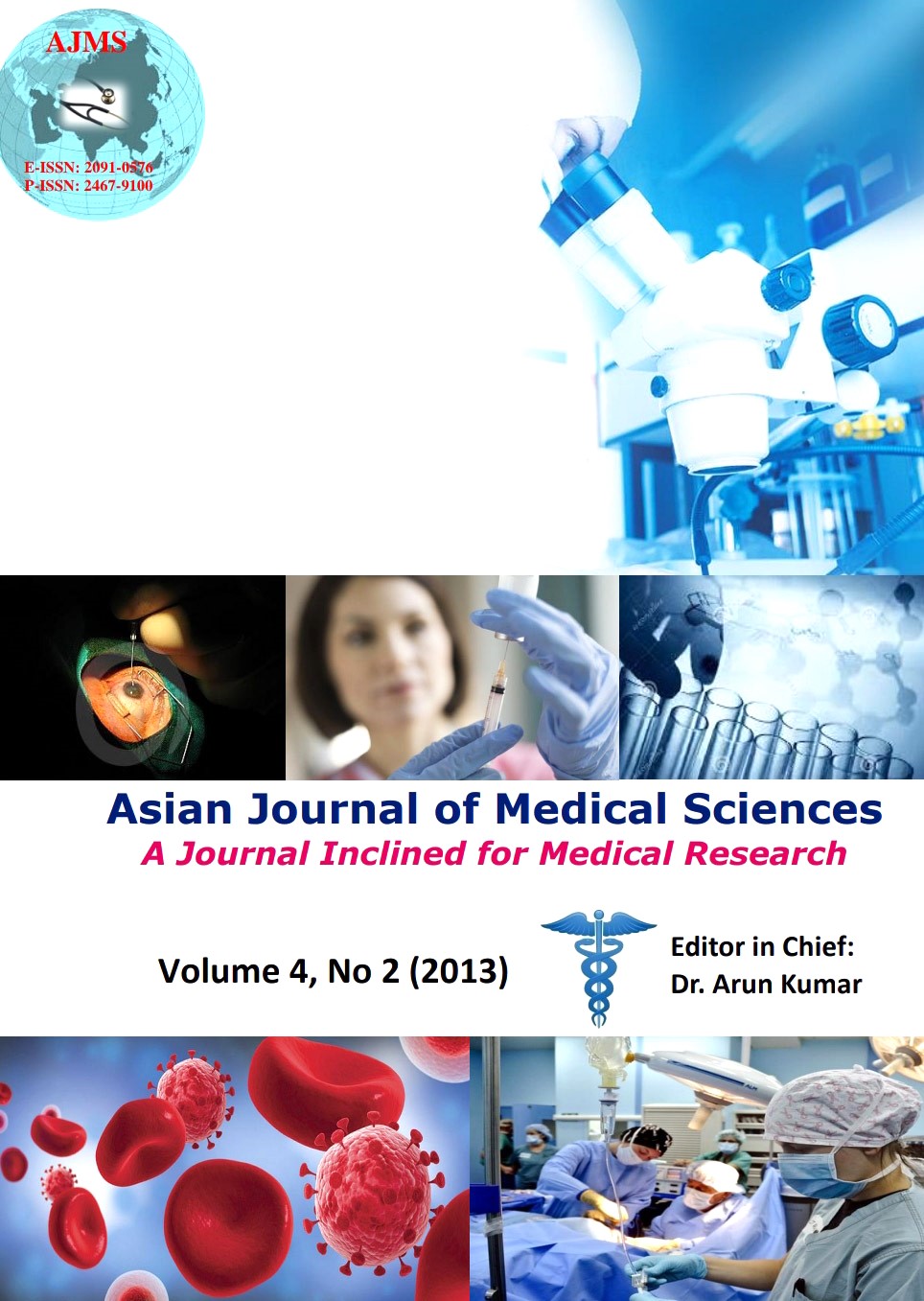Management of major degree placenta previa during LSCS operation - a new surgical technique (Dutta's)
Keywords:
Major degree placenta previa, new surgical technique (Dutta’s), cesarean section, PPHAbstract
Objectives: Evaluation of a new surgical technique (Dutta’s) to prevent postpartum hemorrhage due to major degree placenta previa during cesarean section.
Methods:This study was conducted at tertiary care hospital(JNM,& NSGH) at Kalyani, Nadia, West Bengal, India from the period January 2004 to December 2009.Ninty four (94) cases diagnosed to be having major degree placenta previa, undergoing LSCS operation, were selected for this study. New surgical technique(Dutta’s) was adopted in a stepwise manner = delivery of baby > bilateral uterine artery ligation by chromic catgut no-1 suture >injection tranexamic acid (1000mg) IM > injection oxytocin in intravenous infusion(10 units 30 drop /min in 500 ml of 5% dextrose)>delivery of placenta and membranes> checked properly if any tear or laceration in placental site > closure of uterine wound was done after securing bleeding from placental bed >closure of abdomen in layers by polyglycolic acid no 1 suture.
Results: It was observed from this study that good effectiveness to control bleeding and intra operative blood loss less than 300cc were seen in 89(94.68%) cases respectively. Six (6.3%) cases required underlying interrupted suture for bleeding from placental bed. Subtotal cesarean hysterectomy was advocated in 3(3.28%) cases due to failure to control uterine atony. Immediate post operative bleeding less than 200c.c was found in 81 (86.16%) cases. Maternal mortality was found to be absent. Maternal morbidity was seen in 12(12.76%) cases. Subsequent menstrual cycles were found to be normal in 80(87.91%) cases and repeated pregnancy was observed in 26(28.57%) cases indicating non effect on gonadal function.
Conclusion: Dutta’s new surgical technique during LSCS for major degree placenta previa was found to be simple, safe and quick procedure. It reduces perfusion pressure, permits time for further steps, thereby avoiding unnecessary ligation of bilateral internal iliac arteries and cesarean hysterectomy. Maternal mortality and morbidity were also found to be reduced. This technique is suitable for rural based hospital in absence of adequate blood transfusion facility.
DOI: http://dx.doi.org/10.3126/ajms.v4i2.7958
Asian Journal of Medical Sciences 4(2013) 1-7
Downloads
Downloads
Published
How to Cite
Issue
Section
License
Authors who publish with this journal agree to the following terms:
- The journal holds copyright and publishes the work under a Creative Commons CC-BY-NC license that permits use, distribution and reprduction in any medium, provided the original work is properly cited and is not used for commercial purposes. The journal should be recognised as the original publisher of this work.
- Authors are able to enter into separate, additional contractual arrangements for the non-exclusive distribution of the journal's published version of the work (e.g., post it to an institutional repository or publish it in a book), with an acknowledgement of its initial publication in this journal.
- Authors are permitted and encouraged to post their work online (e.g., in institutional repositories or on their website) prior to and during the submission process, as it can lead to productive exchanges, as well as earlier and greater citation of published work (See The Effect of Open Access).




